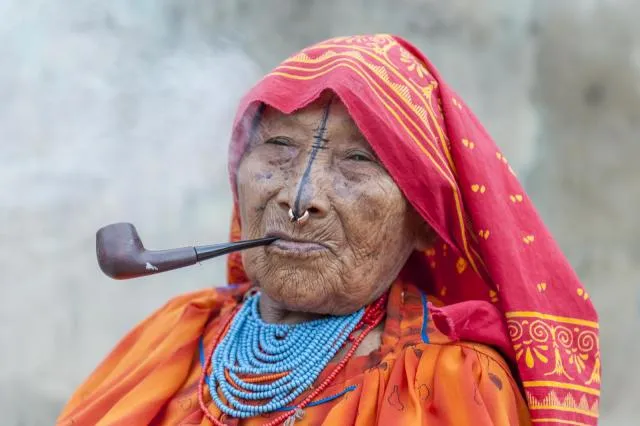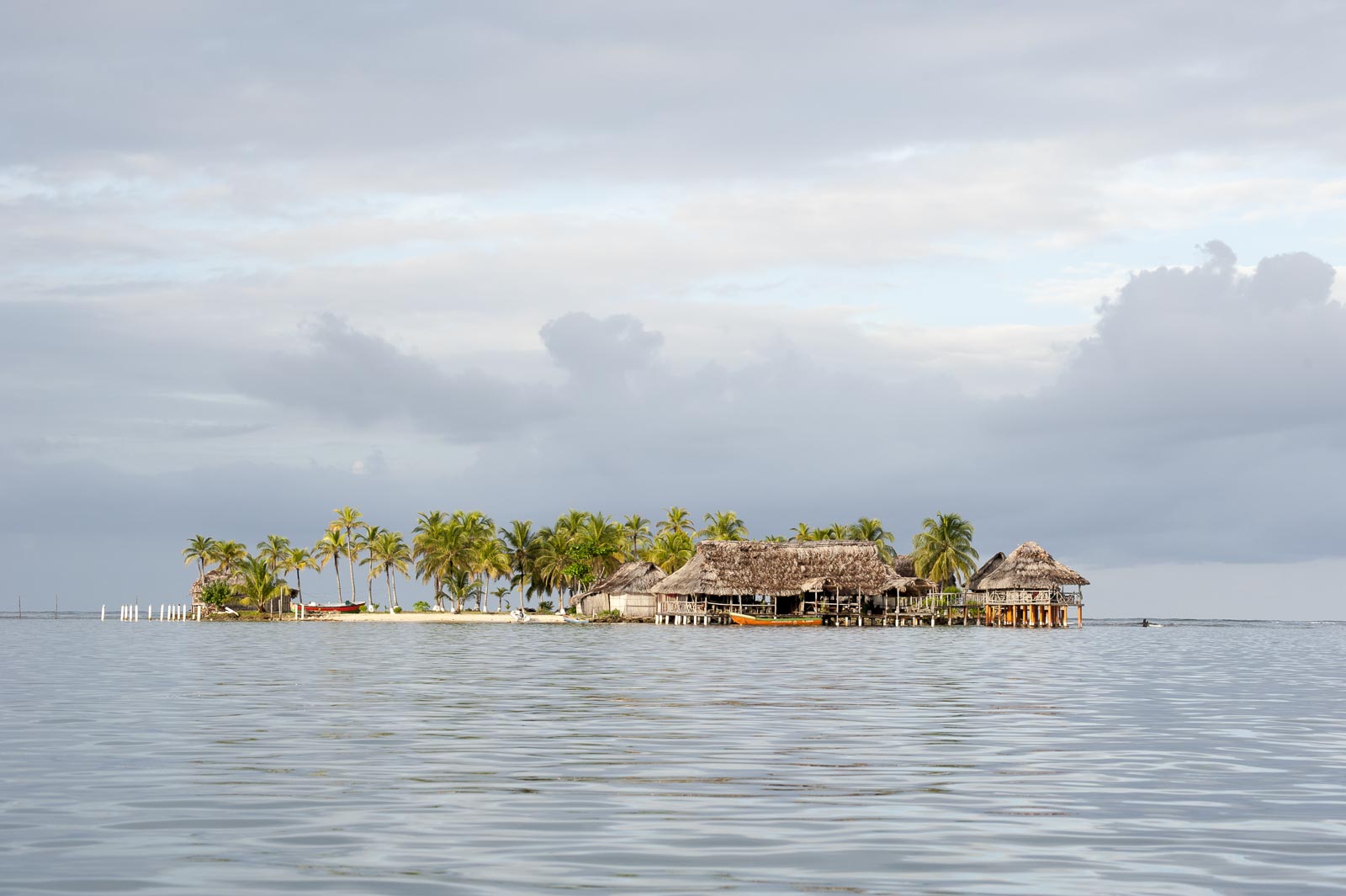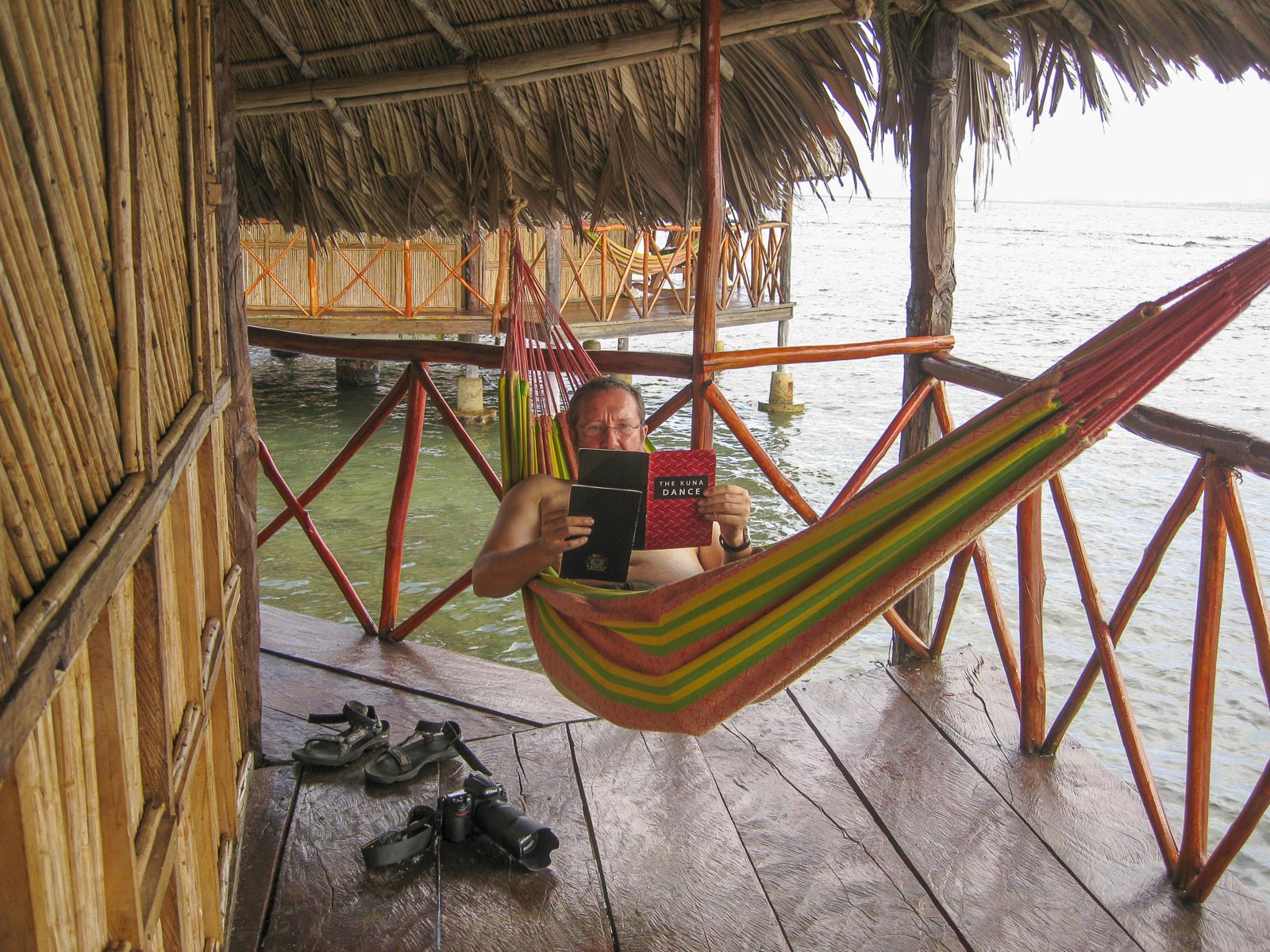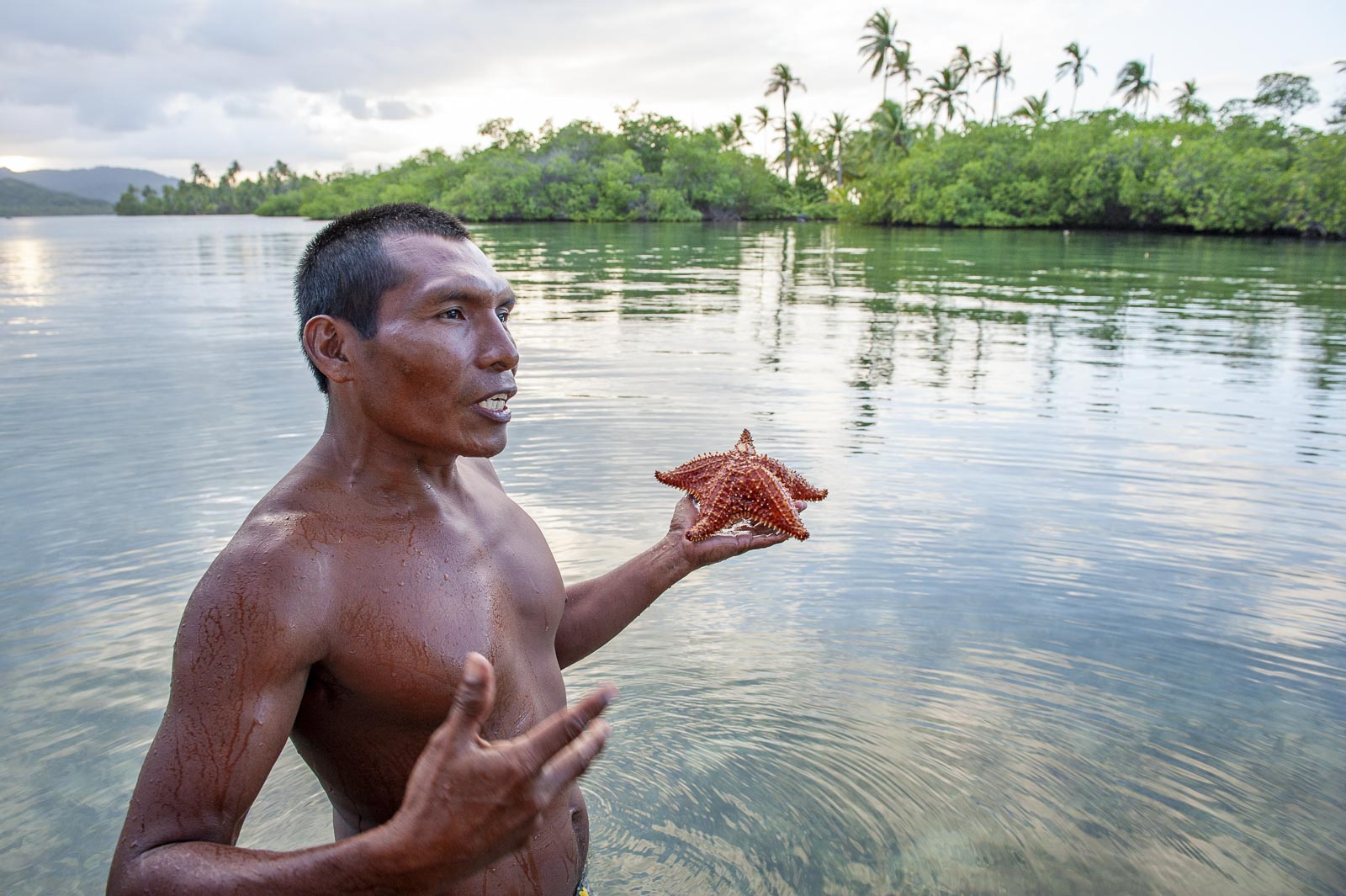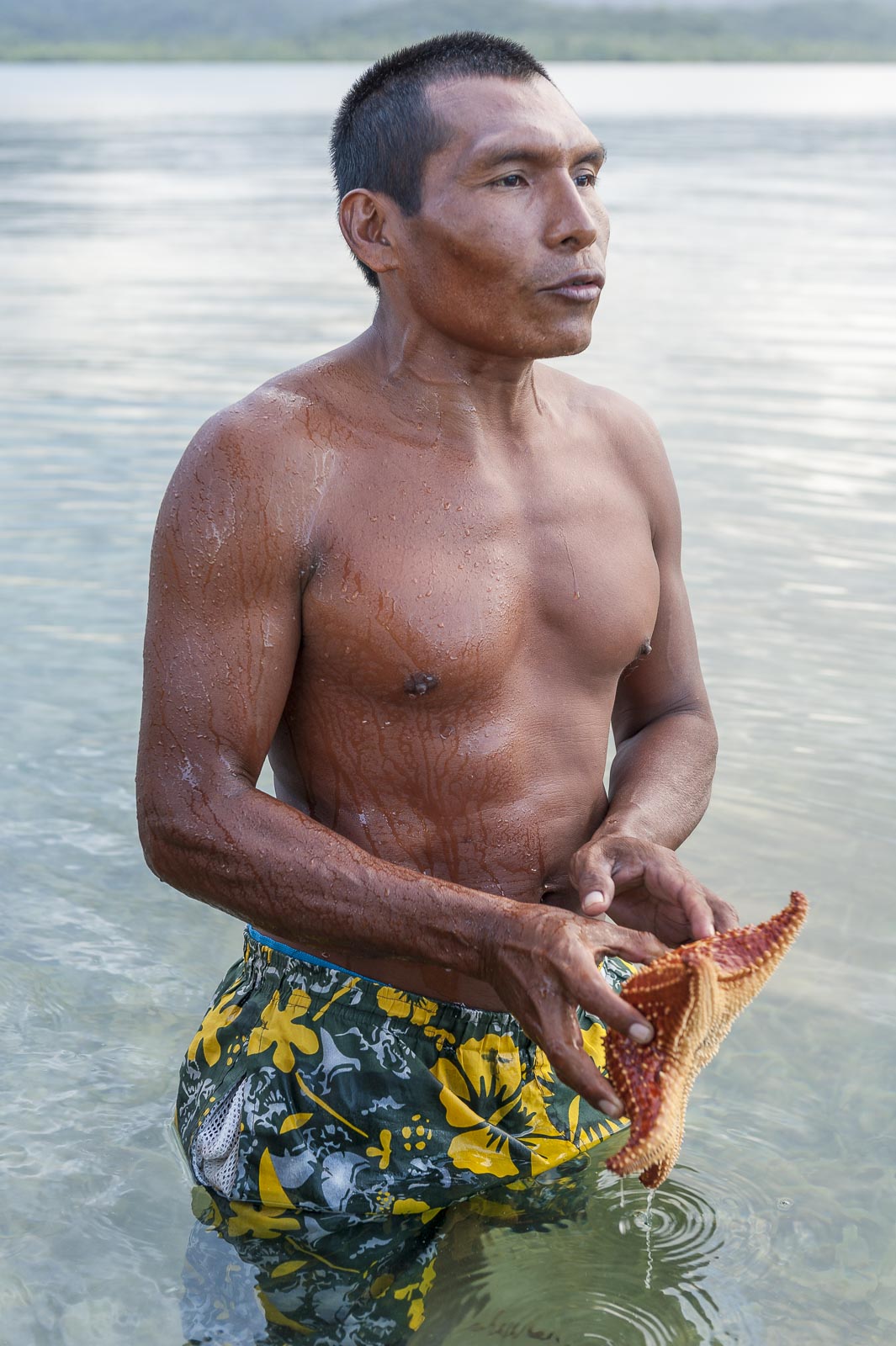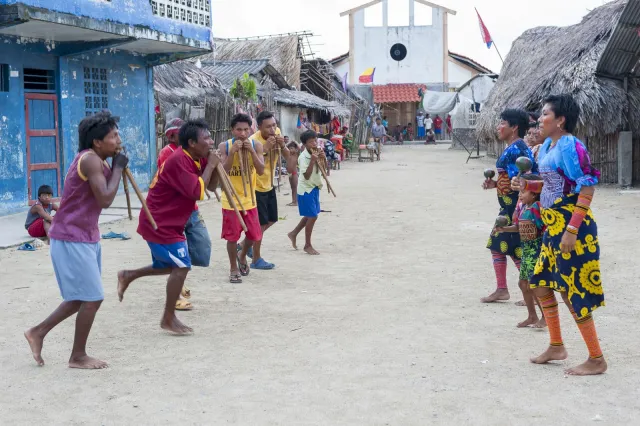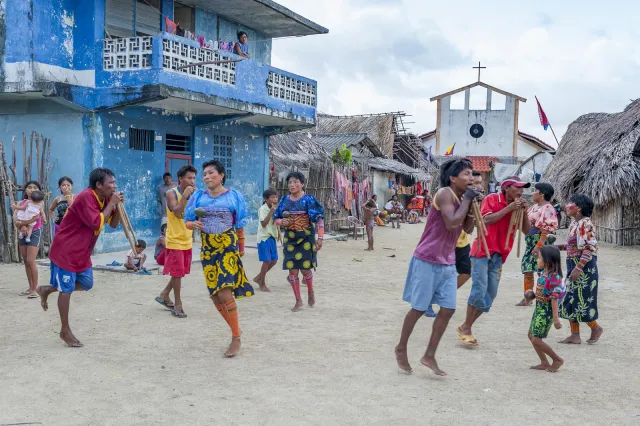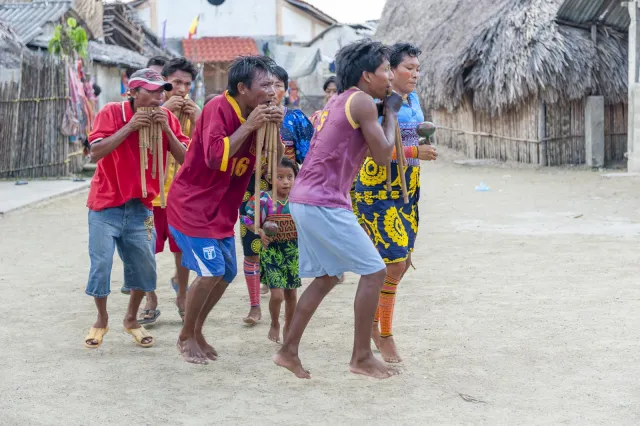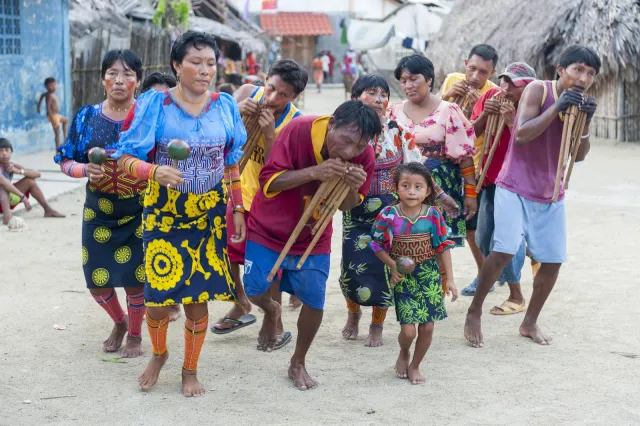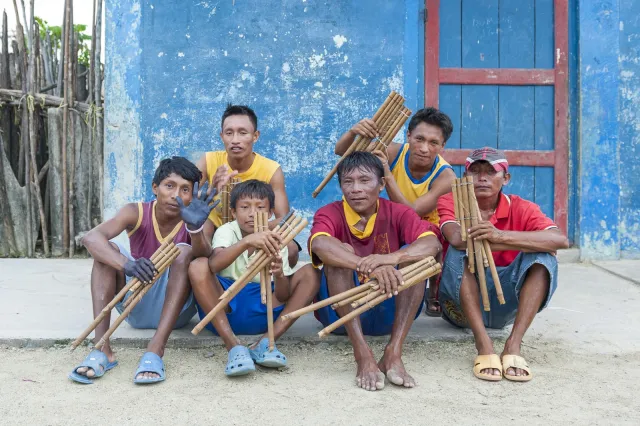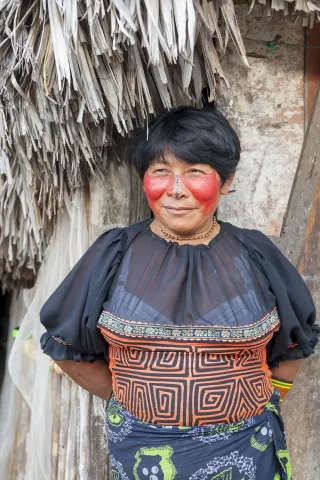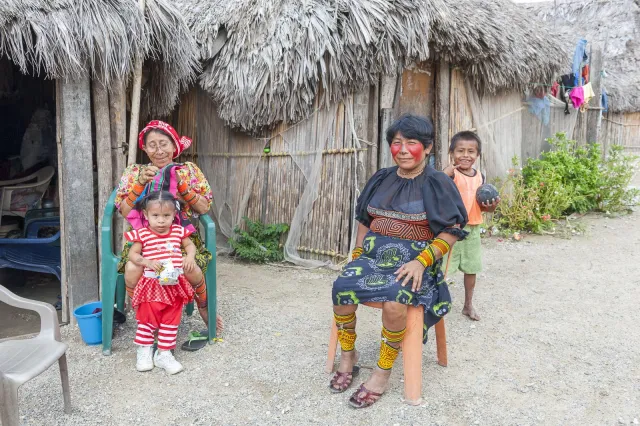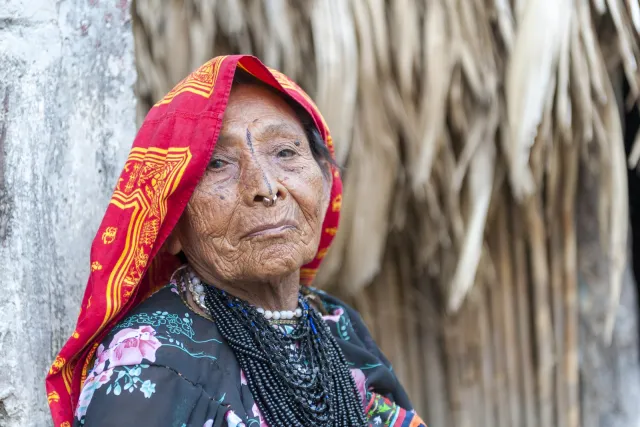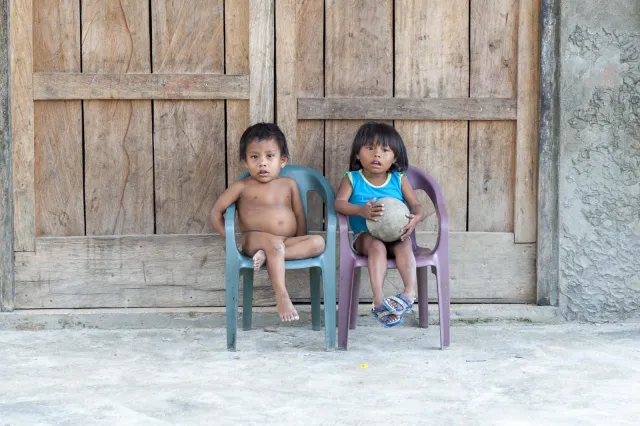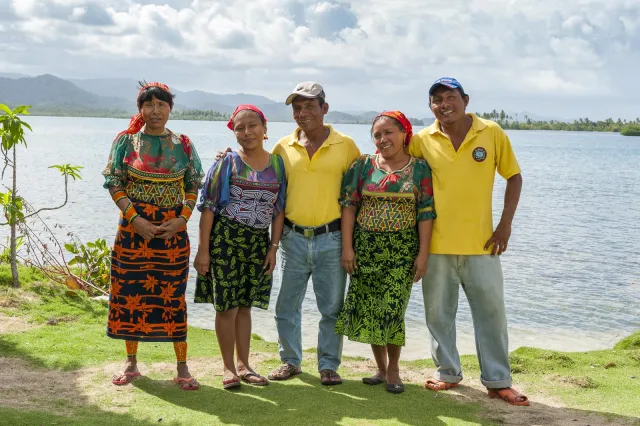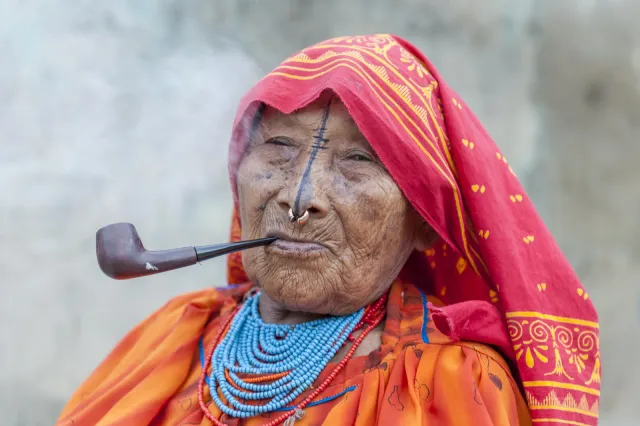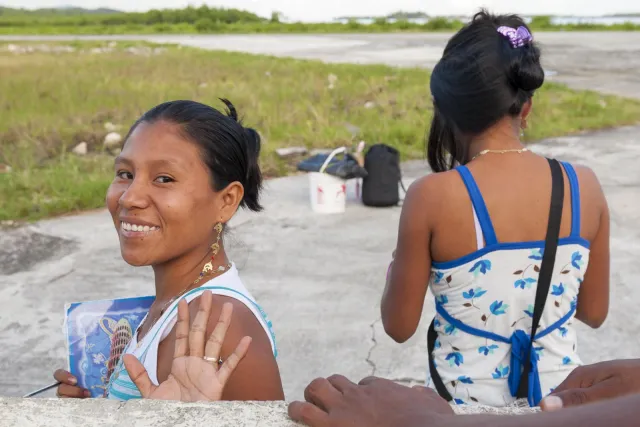In this article: The Kuna from San Blas on the Atlantic coast of Panama
About 30,000 Kuna, which call themselves Dule (translated: human), live in San Blas, an approximately 200 km long coastal strip along the northeastern Atlantic coast of Panama with its offshore islands up to the Colombian border. You can reach the islands by boat and find well-kept huts as accommodations with these friendly people. The Panama Constitution guarantees the kuna rights and territorial rights - but this indigenous ethnic group has had to fight hard for its autonomy today.
After the founding of the state of Panama in 1903, the Panamese tried to gain a national identity and fully integrate ethnic groups like the Kuna. These days the Panamanian district chief in San Blas and his police officers were supposed to practice all the "barbaric" Kunas customs, e.g. to wipe out their traditional dances and body paintings. Instead, western dance events became mandatory for the Kunas. This led to uprisings against the central government of Panama in the 1950s. Today the rights of the kuna are guaranteed in the Constitution of Panama.
Their territory is considered by the Kuna to be the legacy of the entire people and cannot be "owned" - community property takes precedence over individual ownership.
In 1992 the Kuna founded the non-governmental organization (NGO) "Asociacion NAPGUANA" (The Association of Kunas United for Mother Earth). This advocates the careful use of resources and an improvement in the living conditions of the indigenous population of South America. However, the territory of the Kuna has not yet been surveyed, so there are always disputes. The land reform that has so far been omitted is making Panamanian smallholders landless. They clear the rainforest and do intensive agriculture. When the soils are exhausted, they only run livestock and finally - when the soils are completely eroded - new areas are made available. The Kuna are calling for land reform and have founded the "Pemaski" project. They have mapped the settlers' jungle clearing and reforested eroded soils. They also survey the land of Comarca San Blas, patrol the forest to prevent illegal slash-and-burn, and expel settlers from Guna Yala. [1]
Available as NFT: Collection of 100 photos in 100 countries and regions
